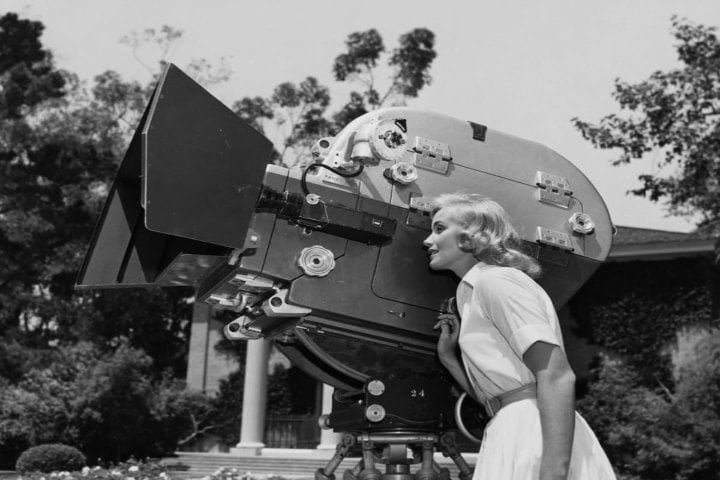Short film scripts have a unique structure that differentiates them from feature-length scripts. Due to their limited runtime, short films must be tightly constructed and efficient in storytelling. Every scene and moment must serve a purpose, and the story must be told in a concise and engaging way.
In This Article
A well-structured script enhances the storytelling experience and ensures that the short film’s limited time effectively conveys the intended message. Additionally, short films often have limited video production budgets, so writers must be mindful of how their stories can be realized visually.
Understanding the Three-Act Structure
In screenplay writing, the three-act structure is a time-tested framework that has proven effective in feature-length and short films. The structure consists of three acts:
- Setup
- Confrontation
- Resolution
In short film scripts, we need to adapt this structure to tell a compelling and engaging story.
In the Setup, we introduce the main characters’ setting and establish the central conflict or theme. It’s essential to engage the audience right from the beginning, as time is of the essence in short films.
Confrontation is where the conflict escalates, and tension builds. In short films, we must make every scene count. Each moment should contribute to the overall narrative and character development.
Finally, the Resolution brings closure to the story. In a short film, resolutions can be subtle or open-ended, leaving room for interpretation. This structure provides a clear framework for crafting impactful short film scripts.

Embracing Nonlinear Storytelling
While the three-act structure is a solid foundation, short film scriptwriters have the creative freedom to experiment with nonlinear storytelling. This approach can captivate the audience’s attention and add an element of surprise.
For instance, starting the story in the middle of the action, can instantly engage viewers. Flashbacks and flash-forwards can be used strategically to reveal crucial information at the right moments. However, nonlinear storytelling must be applied cautiously to ensure that the narrative remains coherent and easy for the audience to follow.
Effective Use of Subplots in Short Films
Subplots can be a valuable tool in structuring short film scripts. They add depth to the story and characters, making the narrative more engaging. However, in the limited runtime of a short film, subplots should be concise and purposeful.
Subplots that complement the main storyline or provide insight into the protagonist’s character may enhance the central narrative. A well-executed subplot can elevate a short film, leaving a lasting impact on the audience.
Balancing Action and Dialogue
In short film scripts, every scene must serve a specific purpose. Balancing action and dialogue is crucial to maintain the audience’s interest and move the story forward effectively.
Action sequences can convey emotions, conflicts, and character development without the need for extensive dialogue. On the other hand, well-crafted dialogues can reveal essential information and deepen character relationships. Striking the right balance between these elements is key to structuring a compelling short film script.
Creating Tension and Resolution within a Limited Time
One of the challenges in structuring short film scripts is creating a satisfying sense of tension and resolution within a short timeframe. We must introduce conflicts early on and build tension progressively to keep the audience engaged.
To achieve this, consider using techniques such as foreshadowing, visual cues, and symbolism. These elements can add layers to the narrative, creating a sense of anticipation and intrigue. When it comes to resolution, short films often benefit from open-ended conclusions that leave room for reflection.
Case Study – An Example of Effective Structure
To illustrate the principles of effective short film script structuring, let’s analyze a brief case study: the acclaimed short film “The Lunch Date.”
In “The Lunch Date,” the three-act structure is condensed into a compact runtime of just 10 minutes. The Setup introduces the protagonist, a woman waiting for her train at a busy station. Through a series of events, she ends up in a cafeteria with a stranger. The Confrontation occurs when the stranger accidentally leaves his bag, and the woman discovers a racial divide.
The Resolution is where the film takes an unexpected turn. The woman’s initial perception of the stranger is challenged when she realizes they have more in common than she thought. This resolution is thought-provoking, as it challenges preconceived notions and leaves the audience reflecting on their own biases.
Character Development and Effective Dialogue Writing
In short film scripts, character development and dialogue writing are the twin pillars supporting compelling storytelling. Crafting memorable characters and meaningful dialogues is crucial, even within the constraints of limited screen time.
Creating Multi-Dimensional Characters
Character development in short film scripts should be concise yet impactful. We must introduce characters that resonate with the audience quickly. To achieve this, following are key aspects:
- Motivations and Goals: Clearly define what drives the characters. Their desires and objectives should be evident early in the script, allowing the audience to connect with their journey.
- Backstories: Hints of a character’s backstory can provide depth. Subtle visual cues, expressions, or brief flashbacks can reveal essential information.
- Flaws and Vulnerabilities: Imperfections humanize characters. Showing their vulnerabilities and weaknesses can make them relatable and engaging. These flaws can also drive the plot.
- Character Arcs: Even in a short film, characters should undergo some form of transformation or growth. It doesn’t need to be extensive, but it should be noticeable.
Crafting Authentic Dialogue
Effective dialogue in short film scripts is a skill that demands precision. Every word spoken by characters should serve a purpose, whether it advances the plot, reveals character traits, or conveys emotion. Here’s how we can craft authentic and impactful dialogue:
- Subtext: Subtext is a powerful tool in dialogue writing. Characters may not always say what they mean directly. The unsaid words, hidden intentions, and underlying emotions create depth and intrigue.
- Economy of Words: We must convey information or emotion with as few words as possible. Trim unnecessary dialogue to maintain the film’s pace.
- Distinct Voices: Each character should have a unique voice and speaking style. This helps differentiate them and adds authenticity to their interactions.
- Show, Don’t Tell: Instead of characters explicitly stating their feelings, show these emotions through their actions, expressions, and reactions to situations.
Power of Minimalism in Character Development
In the world of short film scripts, the mantra of “less is more” often applies. The brevity of these films necessitates a minimalist approach to character development. Here are some strategies to harness the power of minimalism:
- Visual Clues: Use visual elements such as clothing, props, or surroundings to convey aspects of a character’s personality or history. A well-chosen accessory or location can speak volumes.
- Symbolism: Symbolic elements can represent character traits or themes. For example, a character wearing a cracked watch may symbolize a life marked by past regrets.
- Actions Speak Louder: Instead of lengthy monologues, showcase character traits through their actions. A character’s decision to help a stranger or hesitate in a critical moment can reveal their true personality.
- Contrast: Create contrast between characters to highlight their differences. A quiet character can stand out more when surrounded by more outspoken ones.
Using Dialogue to Drive Plot and Theme
Dialogue is a powerful tool for character development advancing the plot and conveying thematic elements in short film scripts. Here’s how we can achieve this synergy:
- Exposition through Interaction: Characters can reveal essential information when discussing past events or making decisions.
- Foreshadowing: Use dialogue to foreshadow events or themes in the story. Subtle hints dropped in conversations can pique the audience’s curiosity.
- Conflict and Resolution: Dialogue-driven conflicts create tension, keeping the audience engaged. The resolution of these conflicts can be a turning point in the narrative.
- Theme Reinforcement: Ensure that the dialogues align with the overarching theme of the short film. Consistency in language and message reinforces the thematic impact.

Climax and Resolution in Short Film Script
The climax of a short film script is the narrative high point—the moment when all the tensions, conflicts, and character arcs converge. In the limited runtime of a short film, we must make every second count. Here are some strategies to craft a powerful climax:
- Build Tension Gradually: Tension should steadily mount as the story progresses. The climax should culminate this tension, leaving the audience on the edge of their seats.
- Character-Driven Climaxes: In short films, character development plays a central role in the climax. The characters’ choices in this critical moment should reflect their growth or transformation.
- Visual and Emotional Impact: Short films convey emotions and ideas visually. Use the visual medium to evoke emotions and create a lasting impact during the climax.
- Surprise or Subversion: Short films provide an excellent opportunity to surprise the audience or subvert their expectations. A well-executed twist or unexpected resolution can leave a lasting impression.
Crafting Satisfying Resolutions
After the climax, it’s essential to provide a satisfying resolution that ties up loose ends and leaves the audience with a sense of closure. Achieving this in short film scripts requires:
- Balance Closure and Openness: Short films often benefit from a resolution that combines closure with an element of open-endedness. It allows viewers to reflect and interpret.
- Emotional Catharsis: The resolution should address the central conflicts and character arcs, leaving viewers with a sense of fulfillment.
- Echoing Themes: The resolution should echo the themes established throughout the film. It’s an opportunity to reinforce the central message or idea.
- Visual Poetry: As with the climax, use visuals and symbolism in the resolution to create a poetic and memorable conclusion.
Case Study – “Paperman”
To illustrate the principles of crafting climax and resolution effectively in short film scripts, let’s examine the Disney short film “Paperman.”
In “Paperman,” the climax is a key moment when the protagonist, who is captivated by a woman he met at a train station, tries to win her attention through paper aeroplanes. The climax is a visually striking sequence, with paper aeroplanes filling the sky, symbolizing his determination and the connection between the characters.
The resolution, however, is where the magic happens. It combines closure with a touch of open-endedness, leaving the audience with a sense of warmth and wonder. It’s a testament to the power of a well-crafted resolution in a short film.





